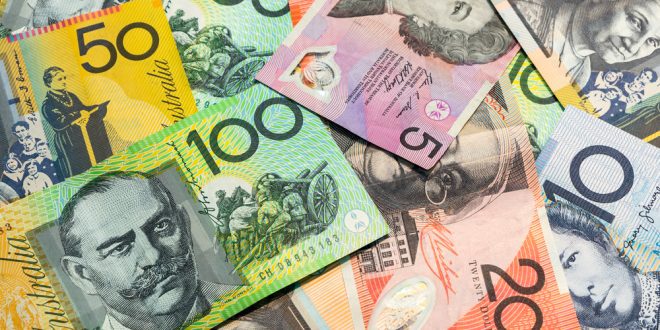As of writing, the AUD/USD pair has decreased by 0.50% and is currently trading at 0.6614.
With a reported growth rate of 5.2% in Q3, the US economy grew at its fastest rate in almost two years, exceeding the 5% forecast. Along with employment data, traders of the AUD/USD pair are anticipating the release of US Core PCE numbers.
The Australian Dollar extended its earlier losses against the US dollar on Wednesday after the US economy in the third quarter, grew at a faster pace than expected, suggesting the US Federal Reserve’s job is not done.
Along with a softer Australia’s inflation reading, weighed on the AUD/USD, which trades at 0.6621, down by 0.39%.
The economy expanded at a rate of 5.2% in Q3, which was faster than the 5% predicted by the US Bureau of Economic Analysis (BEA) and the highest pace in nearly two years. The data suggested that household consumption was declining while business investment increased, suggesting that the services sector may experience a short-term slowdown. Despite the positive reading and the sponsorship of a leg-down in the pair, consumers were still suffering from higher interest rates.
Investors had factored in more than 115 basis points of rate cuts by the Fed in 2024 despite the data. The decline in US Treasury bond yields, which has seen the benchmark 10-year note fall to 4.27%—its lowest level since September 14—reflects this. In the meantime, the US Dollar Index (DXY) trades solid with gains of more than 0.15%, up at 102.93.
In Australia, the Consumer Price Index (CPI) for October dipped to 4.9% from 5.6% in October, sponsored by lower prices in goods, petrol, holiday and travel costs.
Traders were expected CPI at 5.2%, which were caught off guard, sending the AUD/USD sliding, as investors expect a less hawkish Reserve Bank of Australia (RBA), which lifted rates 25 bps earlier this month, to 4.35%.
Ahead in the calendar, the US calendar will feature the Fed’s preferred gauge for inflation, the Core Personal Consumption Expenditures (PCE) price index, along with employment data on Thursday. The Aussie’s docket will feature Building Permits and Housing Credit data.
Technically; after reaching a four-month high, the AUD/USD forms a two-candlestick ‘dark cloud cover’ chart pattern, suggesting the pair could drop further. Although downside risks remain, sellers must drag prices below the 0.6600 figure and the 200-day moving average (DMA) at 0.6580.
Once those levels are breached, the next demand area would be the 0.6500 mark. On the other hand, if buyers keep the exchange rate above 0.6600, that could set the stage for a rally toward 0.6700.

 Noor Trends News, Technical Analysis, Educational Tools and Recommendations
Noor Trends News, Technical Analysis, Educational Tools and Recommendations




